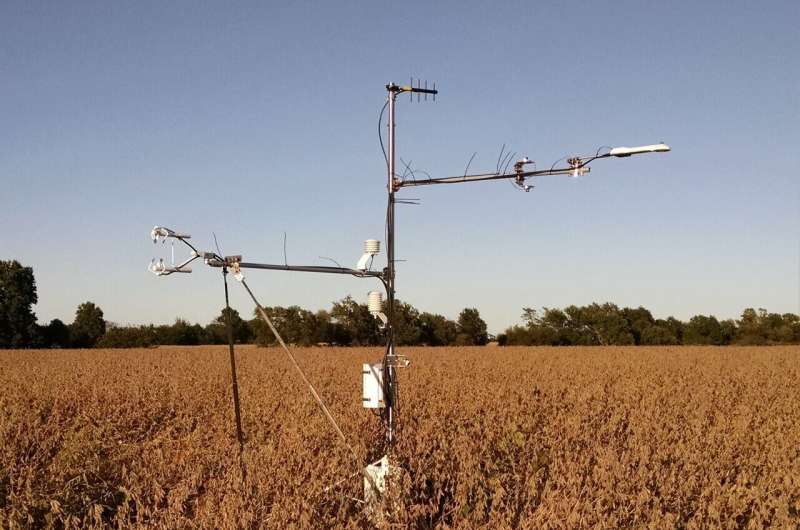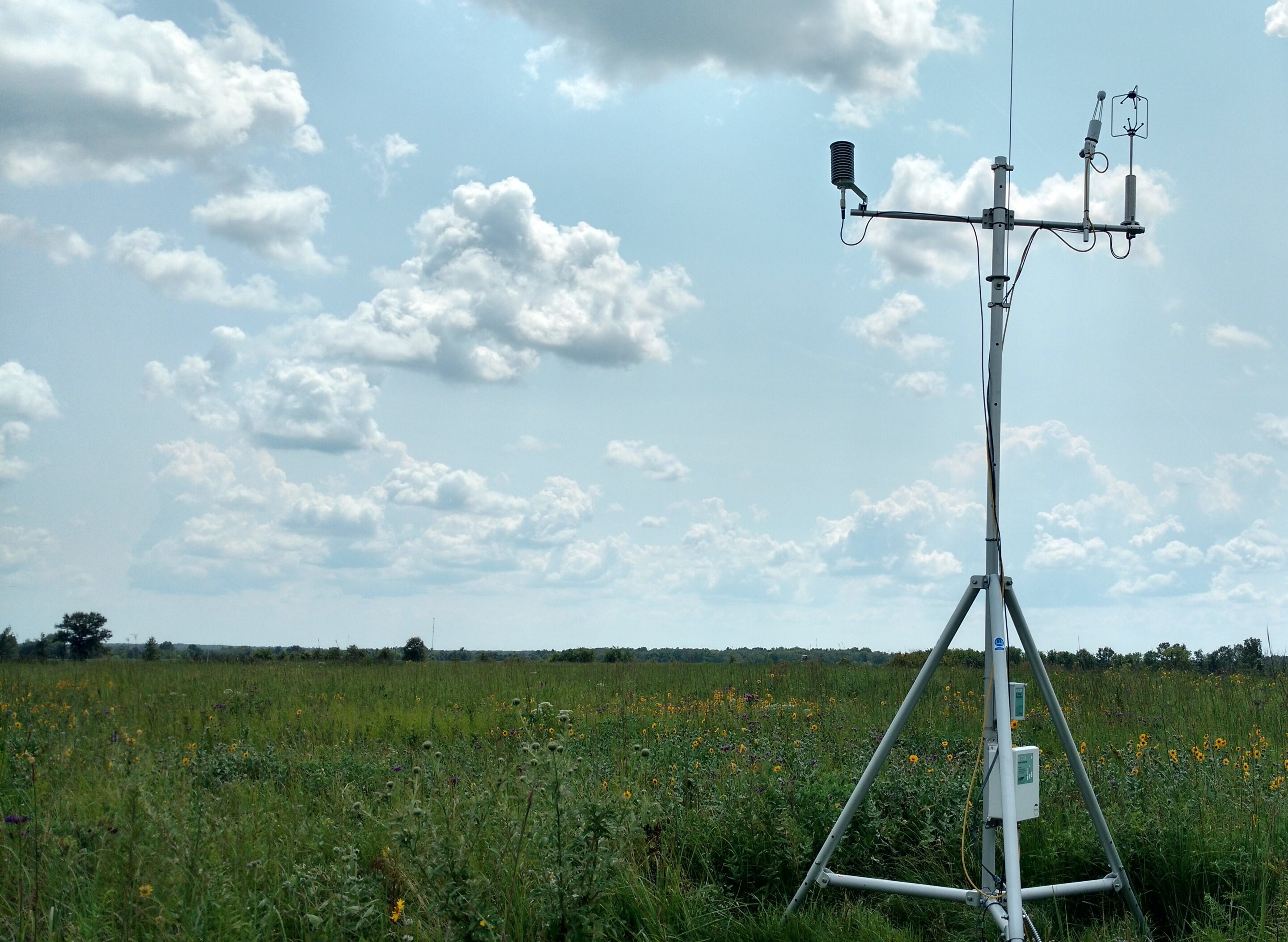Plants primarily use water to absorb carbon dioxide from the atmosphere, creating a strong link between the water and carbon cycles. In a recent study, scientists from the University of Missouri and the United States Department of Agriculture (USDA) utilized this fundamental principle to identify sustainable farming practices that can enhance the resilience of staple crops like corn and soybeans in the face of increasingly common extreme weather events in the Midwest.
The research findings were published in the journal Agriculture and Forest Meteorology.
This study investigated how different farming practices affect crop resilience to climate change by examining water and carbon fluxes in contrasting ecosystems: a conventional tilled cropping system, an aspirational no-till cropping system with cover crops, and a native tallgrass prairie ecosystem.
“Climate-smart agriculture is one of our main objectives. This involves utilizing crops to absorb carbon dioxide from the air and adopting farming practices that enable farms to adapt to changing climate conditions,” explained Dr. Adam Schreiner-McGraw, a research hydrologist at the USDA. “As temperatures rise, plants experience more stress, resulting in lower crop yields. This research focuses on understanding adaptation strategies and working towards more resilient agro-ecosystems.”
By comparing the rates of evapotranspiration (the transfer of water from land to the atmosphere) and carbon dioxide exchange, interesting patterns emerged among the ecosystems. Analysis of four years’ worth of data revealed that the native prairie ecosystem exhibited higher rates of evapotranspiration compared to the tilled cropping system. However, the prairie’s evapotranspiration rate was not significantly different from that of the no-till cropping system. Furthermore, both cropping systems demonstrated higher levels of plant growth (carbon uptake) compared to the native prairie.

Based on these findings, the tilled cropping site appears to be the most sensitive to environmental changes compared to the native prairie, which demonstrates the highest resilience to extreme weather events. The no-till system, which features the most crop diversity including corn, soybeans, wheat, and hay, displayed the most variable rates of evapotranspiration. Dr. Schreiner-McGraw attributes this phenomenon to different agricultural management strategies.
Understanding the variable rates of evapotranspiration helps scientists evaluate whether planned agricultural management has a greater impact on water and carbon budgets compared to unplanned weather variations. This knowledge can contribute to predictions regarding crop water and carbon uptake in the face of worsening extreme weather conditions.
Implementing a diversified crop rotation over the long term is another approach to building environmental resilience. Dr. Jeffrey Wood, an assistant professor in the MU School of Natural Resources, explains that with the intensification of climate fluctuations, including warmer and wetter winters and drier summers with less frequent rainfall in Missouri, understanding the timing and selection of crops for optimal adaptation has become increasingly crucial.
“The nature of our work lends itself to collaboration as we share data within a community-based network,” Dr. Wood shared. “There is a willingness among researchers to share ideas, making collaboration and contribution to research on both local and larger scales easier.”
Co-authors of the study include Megan E. Metz, John Sadler, and Kenneth Sudduth.
More information: Adam P. Schreiner-McGraw et al, Agriculture accentuates interannual variability in water fluxes but not carbon fluxes, relative to native prairie, in the U.S. Corn Belt, Agricultural and Forest Meteorology (2023). DOI: 10.1016/j.agrformet.2023.109420
Citation: New study examines variability of water, carbon in Missouri agriculture ecosystems and future impact on crops (2023, June 21) retrieved 21 June 2023 from https://phys.org/news/2023-06-variability-carbon-missouri-agriculture-ecosystems.html
This document is subject to copyright. Apart from any fair dealing for the purpose of private study or research, no part may be reproduced without the written permission. The content is provided for information purposes only.
Denial of responsibility! SamacharCentrl is an automatic aggregator of Global media. In each content, the hyperlink to the primary source is specified. All trademarks belong to their rightful owners, and all materials to their authors. For any complaint, please reach us at – [email protected]. We will take necessary action within 24 hours.

Shambhu Kumar is a science communicator, making complex scientific topics accessible to all. His articles explore breakthroughs in various scientific disciplines, from space exploration to cutting-edge research.


